Hemingray Glass Company
The Hemingray Glass Company was an American glass manufacturing company founded by Robert Hemingray and Ralph Gray in Cincinnati in 1848.[1] In its early years, the company went through numerous and frequent name changes, including Gray & Hemingray; Gray, Hemingray & Bros.; Gray, Hemingray & Brother; Hemingray Bros. & Company; and R. Hemingray & Company before incorporating into the Hemingray Glass Company, Inc. in 1870.[1] The Hemingray Glass Company had factories in Cincinnati and Covington, Kentucky with main production in Muncie, Indiana. Although Hemingray was best known for its telegraph insulators, the company produced many other glass items including bottles, fruit jars, pressed glass dishes, tumblers, battery jars, fishbowls, lantern globes, and oil lamps.[1] In 1933, the Owens-Illinois Glass Company purchased the company but retained the production facility in Muncie under the Hemingray name.
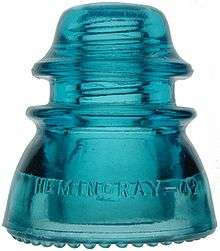 The Hemingray 42, a telegraph pin insulator produced by the Hemingray Glass Company, is widely found in North America | |
Formerly | Gray & Hemingray Gray, Hemingray & Bros. Gray, Hemingray & Brother Hemingray Bros. & Company R. Hemingray & Company |
|---|---|
| Industry | Glass |
| Fate | Purchased by the Owens-Illinois Glass Company |
| Founded | 1848 in Cincinnati, Ohio, United States |
| Founders | Robert Hemingray Ralph Gray |
| Defunct | 1972 |
| Headquarters | |
Number of locations | 3 |
Area served | North America |
| Products | Pin insulators |
The main plant in Muncie closed in 1972 and insulator production ceased.[2] The complex is now used by Gerdau Ameristeel, a steel production company headquartered in Brazil.
Insulators
Hemingray was best known for producing telegraph and telephone pin insulators used on utility poles. To give an overview of the large variety of styles produced, the following table contains the twenty most common.[3] There are two numbers given in this table: the Consolidated Design (CD) number and the style number. The CD number is from a classification system developed by collectors that refers to the shape of the insulator and is completely independent from the Hemingray Glass Company.[4] However, the style number (or name) was assigned by Hemingray to each insulator. Due to slight modifications in design over years of production, single styles can span multiple CD numbers.
| CD | Style | Introduced | Discontinued | Usage | Nickname | Image |
|---|---|---|---|---|---|---|
| 154 | 42 | 1921 | 1960s | Telegraph | 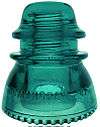 | |
| 121 | 16 | 1890s | 1920s | Long Distance | Toll | 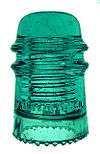 |
| 152 | 40 | 1910 | 1921 | Telegraph | Hoopskirt | 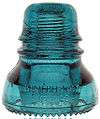 |
| 145 | 21 | 1880s | 1930s | Telegraph | Beehive | 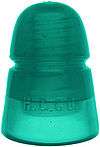 |
| 107 | 9 | 1950s | 1960s | Telephone, Rural | Pony |  |
| 155 | 45 | 1938 | 1960s | Telephone, Long Distance |  | |
| 106 | 9 | 1890s | 1940s | Telephone, Rural | Pony | 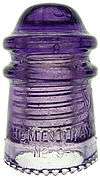 |
| 163 | 19 | 1940s | 1960s | Secondary Power Distribution | 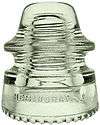 | |
| 160 | 14 | 1880s | 1956 | Telephone, Rural | Baby Signal | 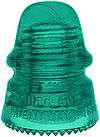 |
| 162 | 19 | 1880s | 1940s | Secondary Power Distribution, Telephone | Signal |  |
| 133 | Standard | 1870s | 1910s | Telegraph | Signal | 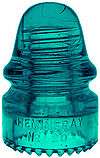 |
| 122 | 16 | 1919 | 1960s | Telephone, Long Distance | Toll | 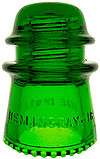 |
| 125 | 15 | 1870s | 1933 | Telegraph | 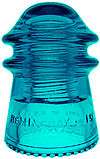 | |
| 147 | --- | 1907 | 1920s | Telegraph | Spiral Groove |  |
| 129 | TS | 1940s | 1960s | Transposition | 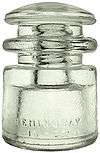 | |
| 113 | 12 | 1890s | 1940s | Telephone | Double Groove Pony |  |
| 128 | CSA | 1930s | 1950s | Telephone, Long Distance | 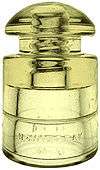 | |
| 134 | 18 | 1880s | 1930s | Telegraph, Secondary Power Distribution |  | |
| 164 | 20 | 1880s | 1940 | Secondary Power Distribution | 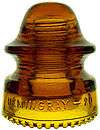 | |
| 124 | 4 | 1880s | 1910s | Telephone |  |
See also
References
- Whitten, David (2015). "Hemingray Glass Company". glassbottlemarks.com. Retrieved May 25, 2015.
- Meier, Bill (August 27, 1995). "Hemingray Glass Insulators - 100 Years Of History". Insulators.info. Retrieved January 28, 2019.
- Willis, Christian. "Hemingray.info - The Hemingray Database: Top 20 Identified Insulators". Hemingray.info. Retrieved January 28, 2019.
- Meier, Bill (December 14, 2004). "CD Numbers Explained". Insulators.info. Retrieved January 28, 2019.